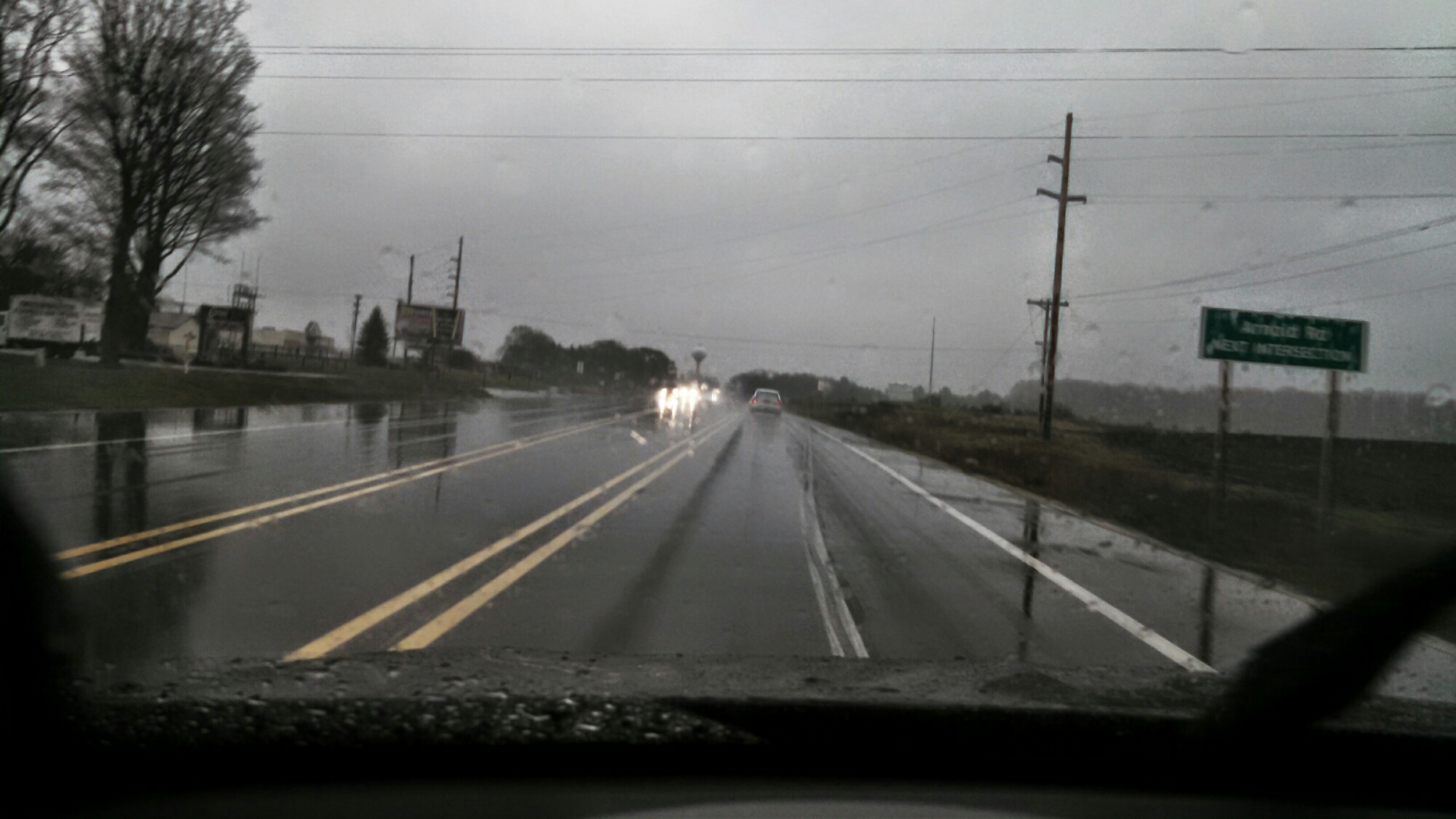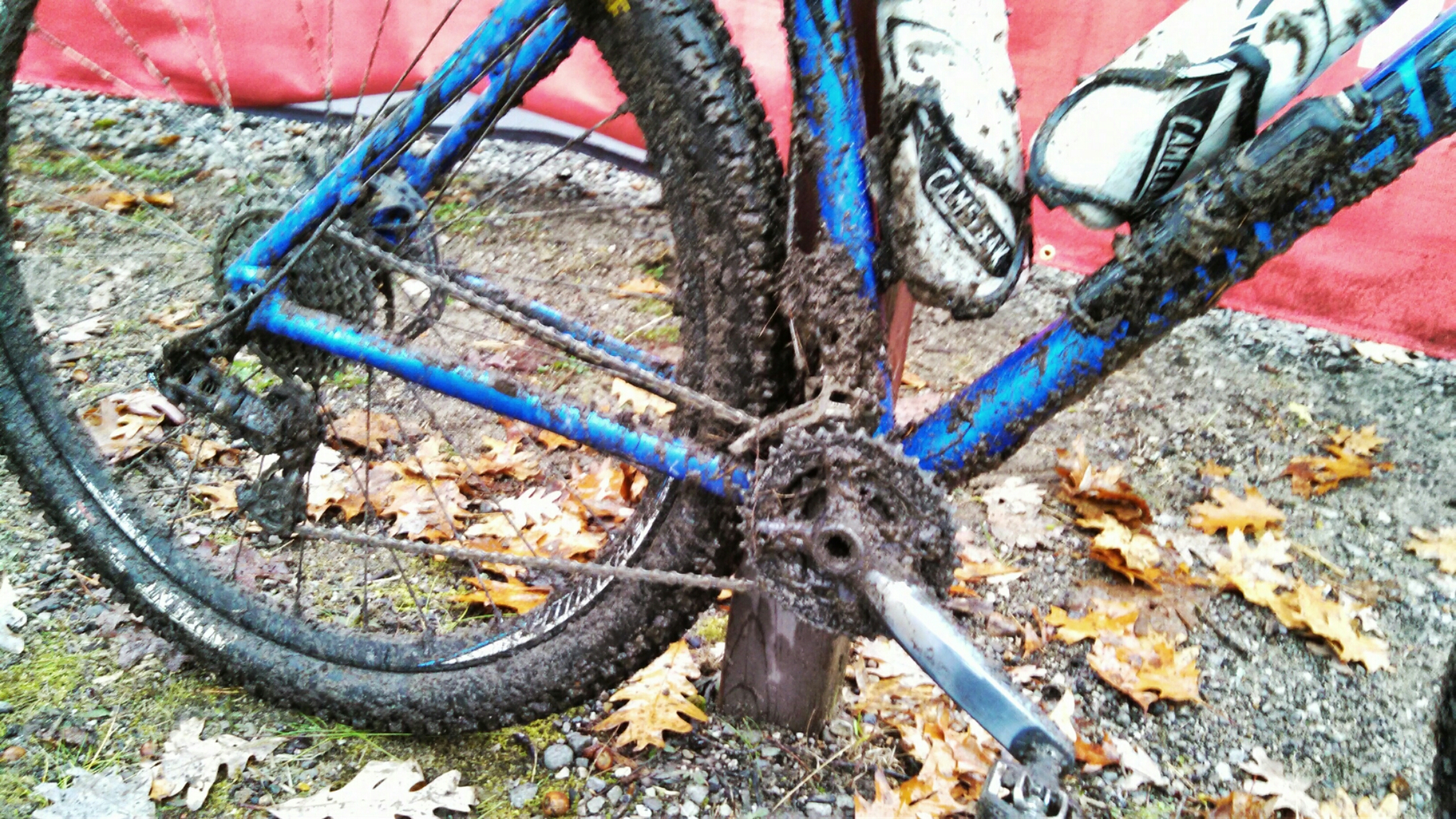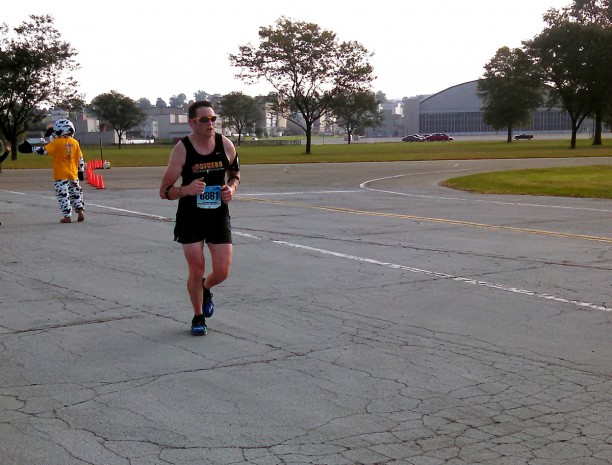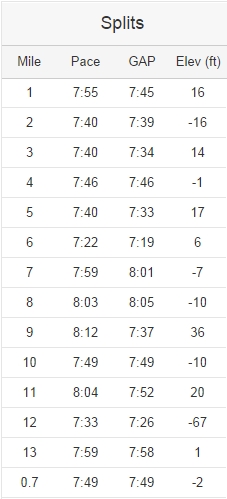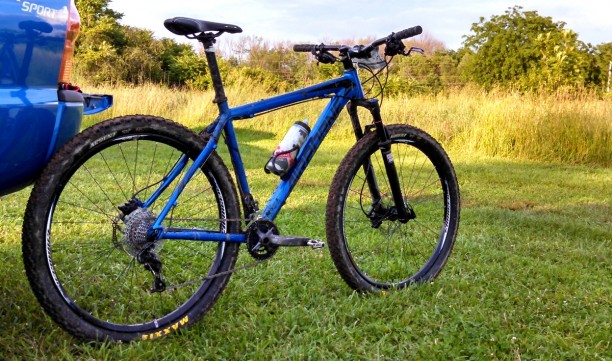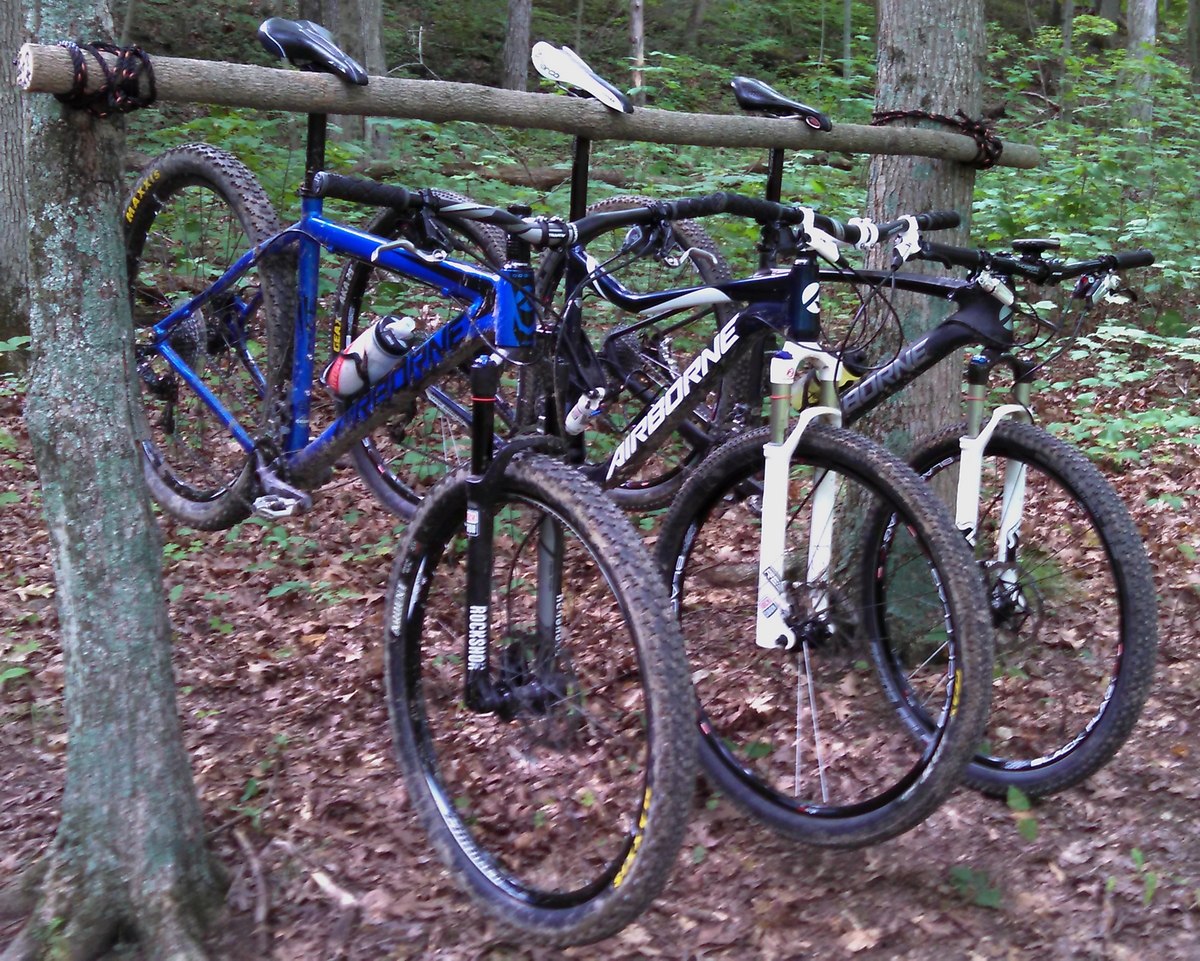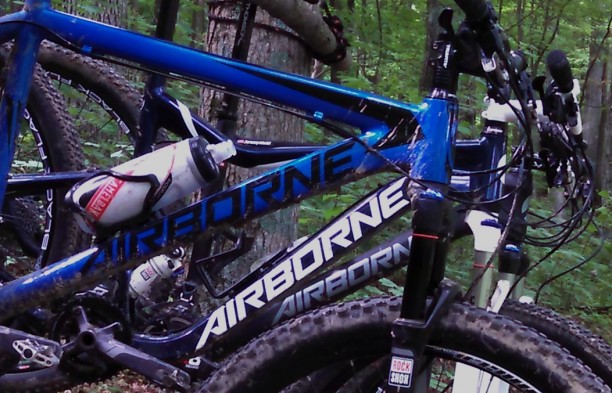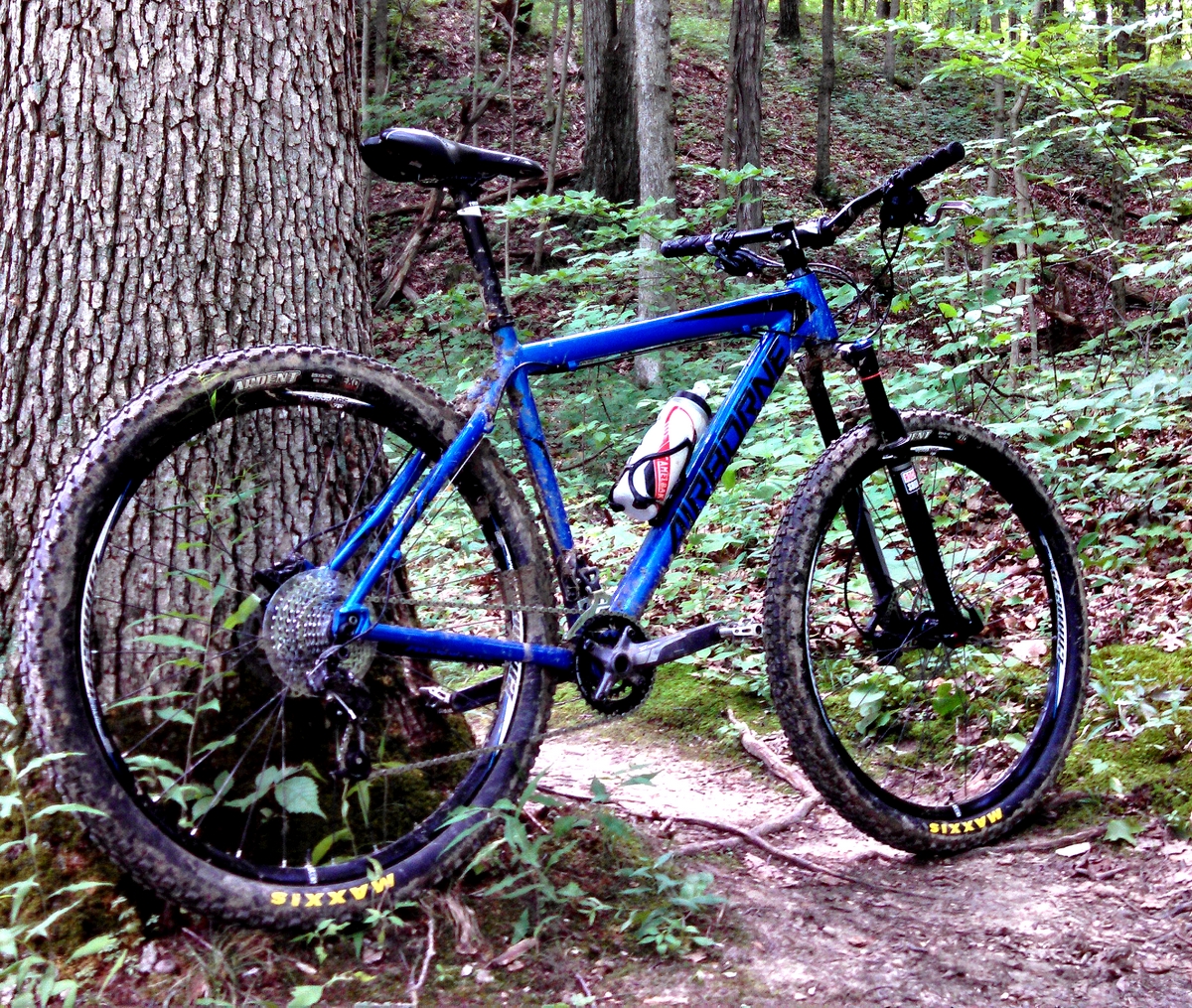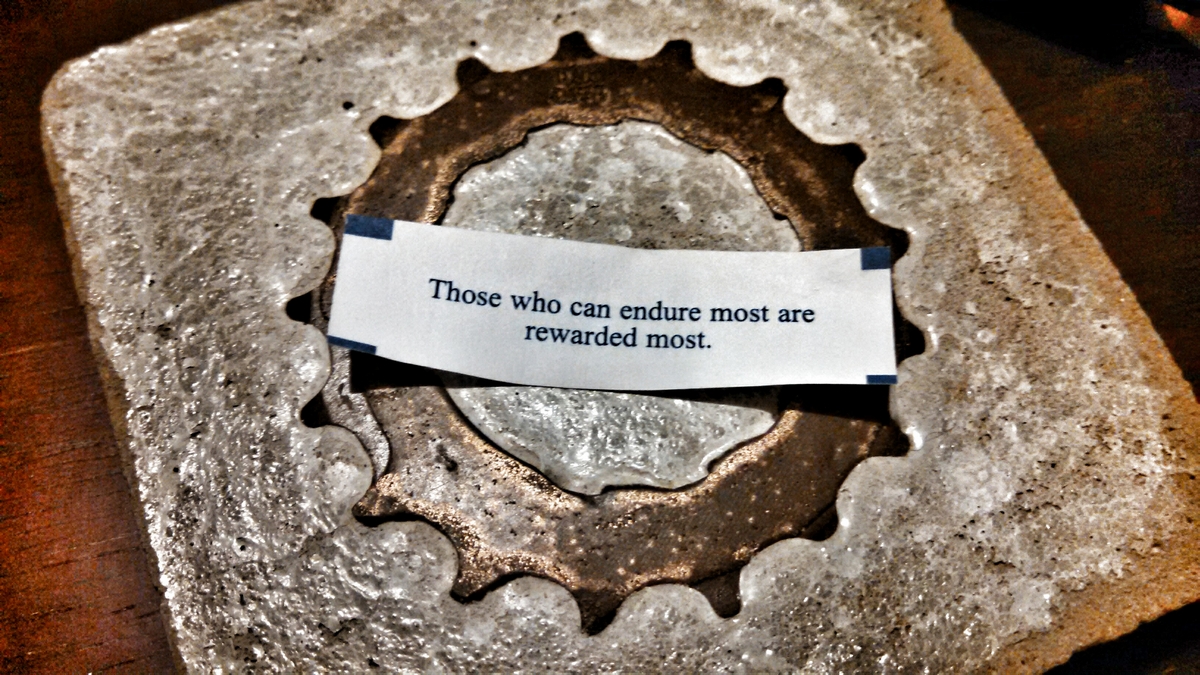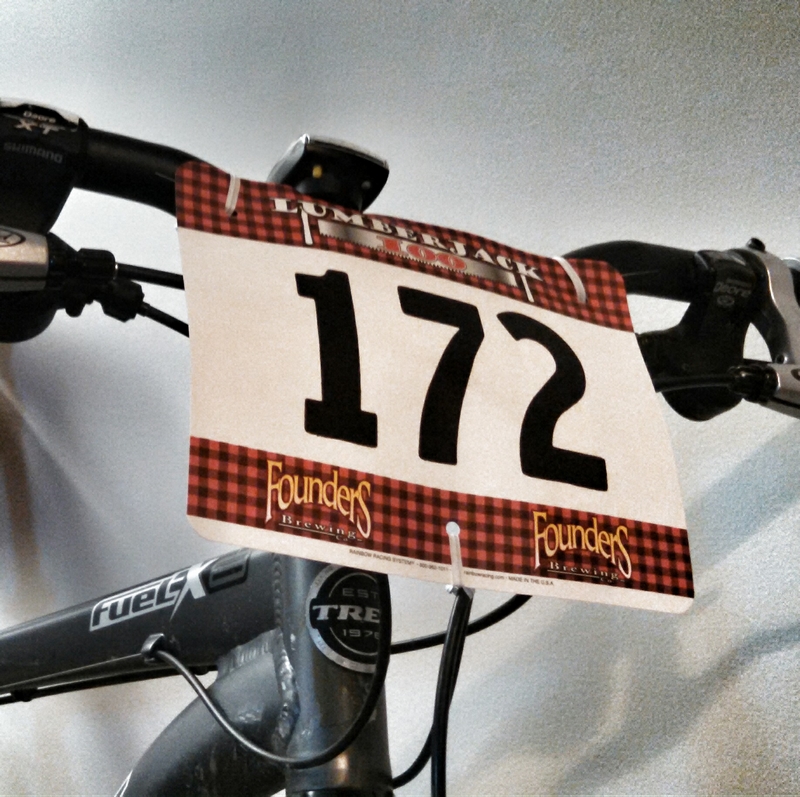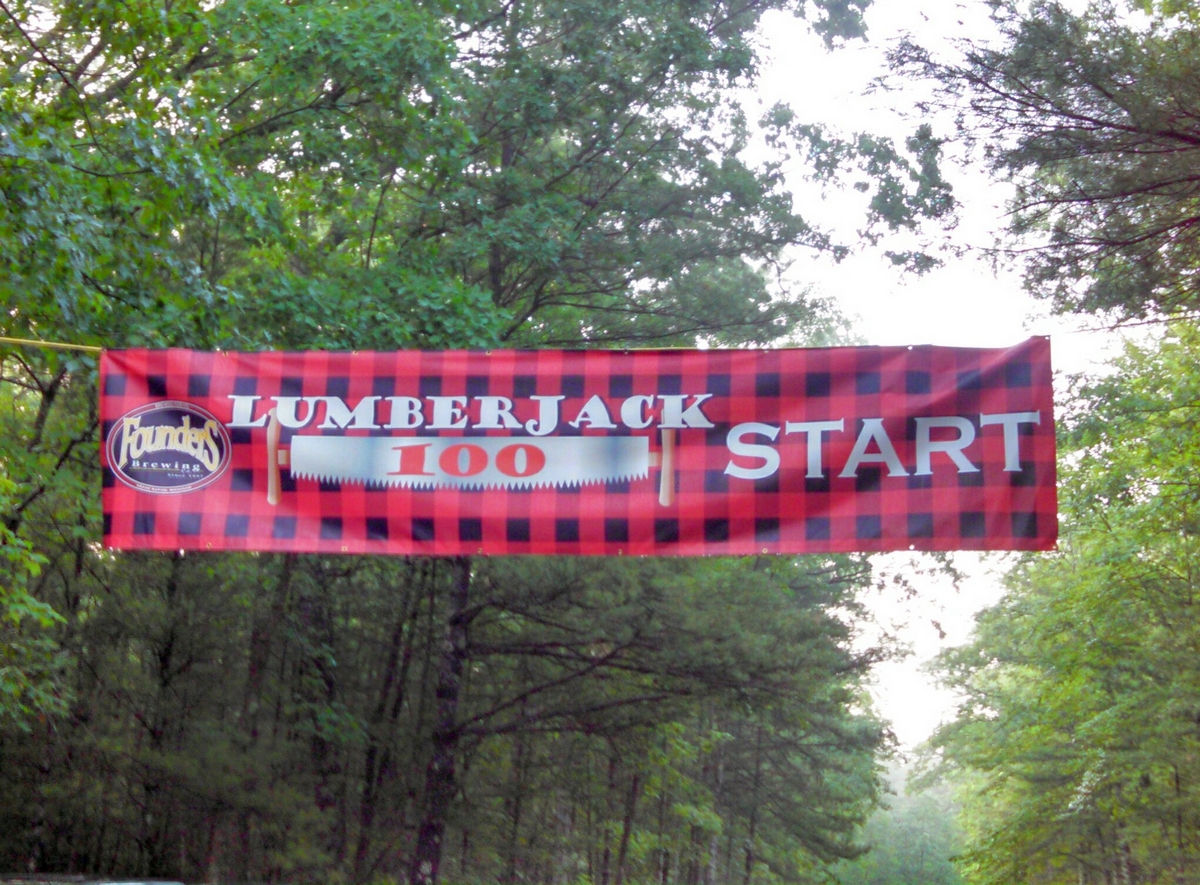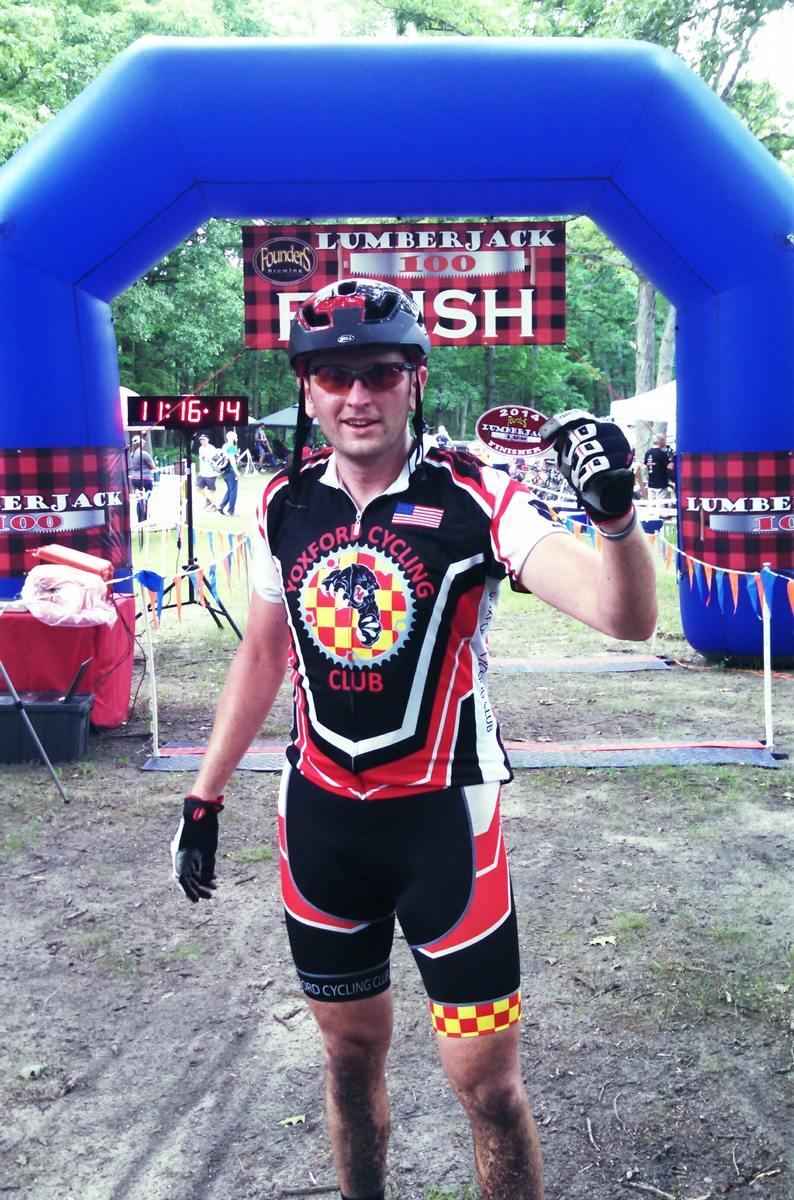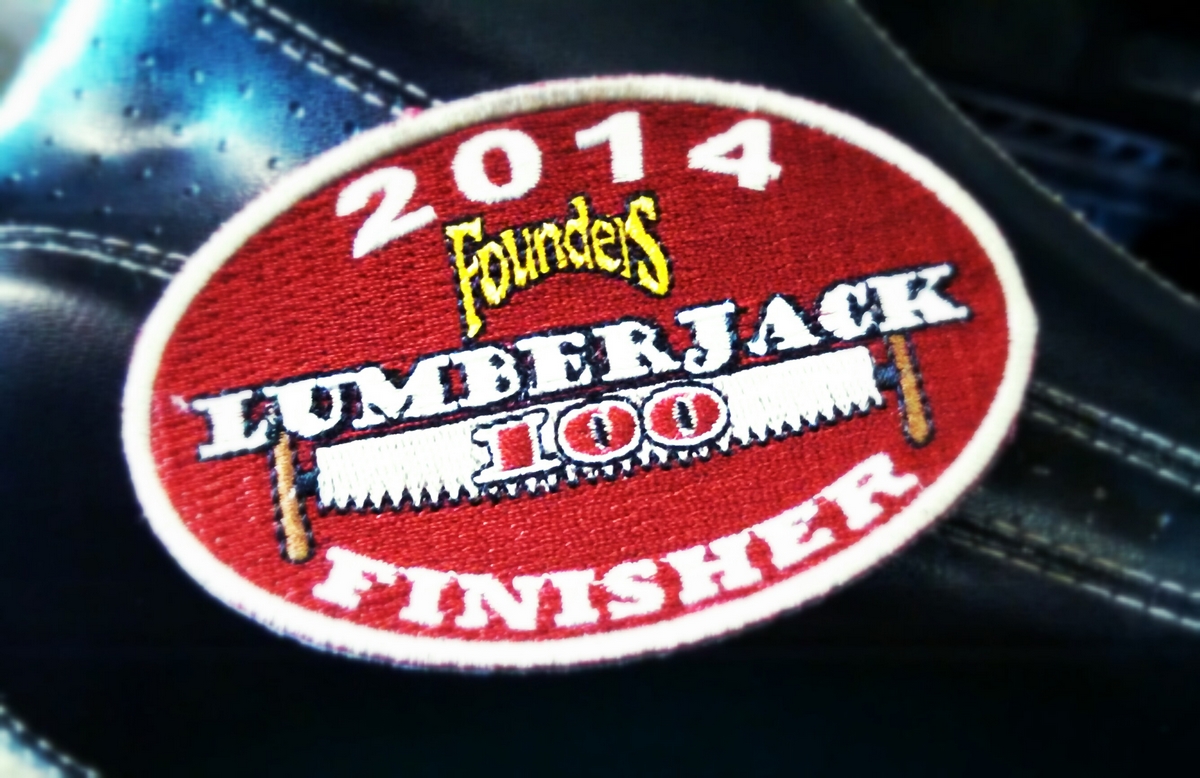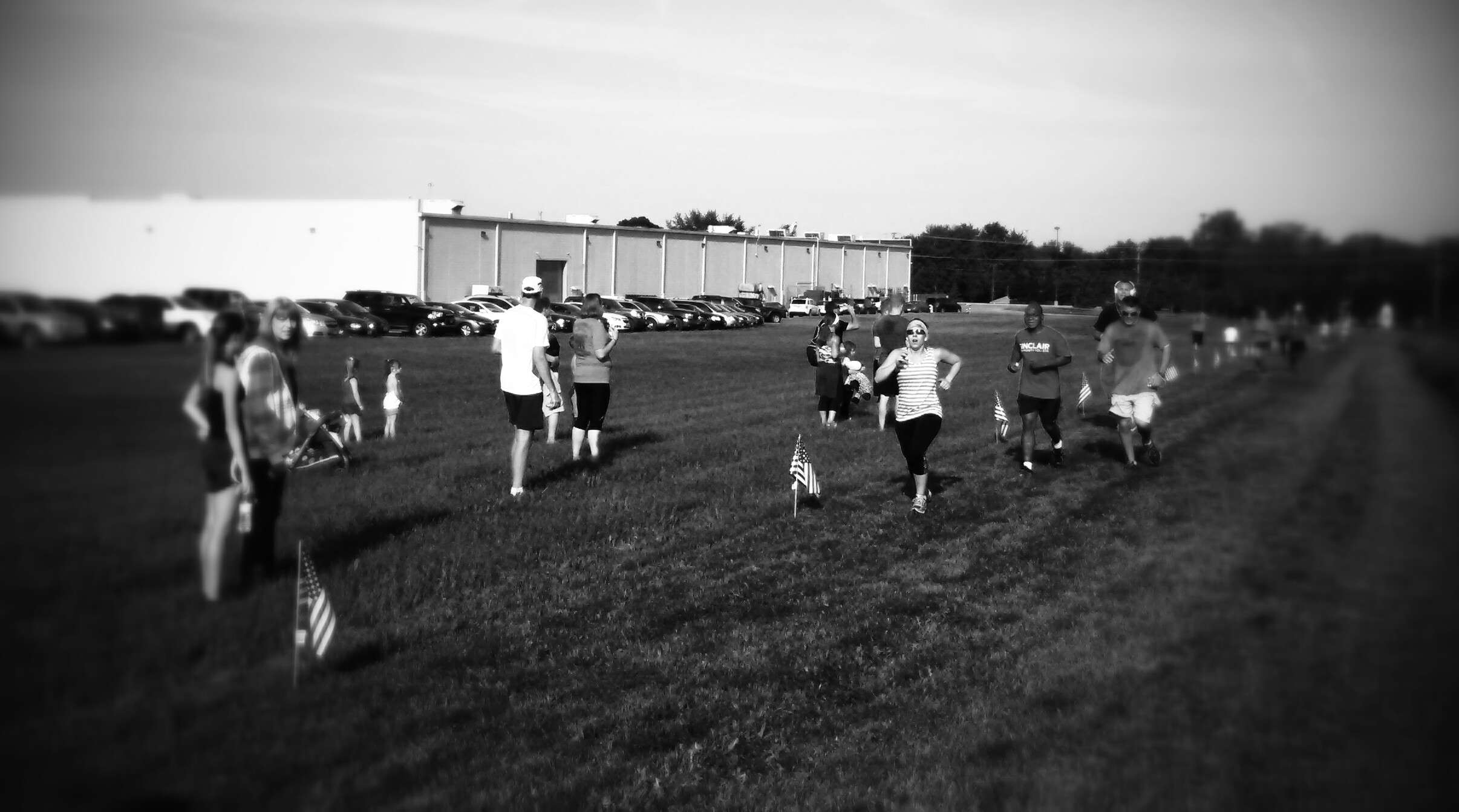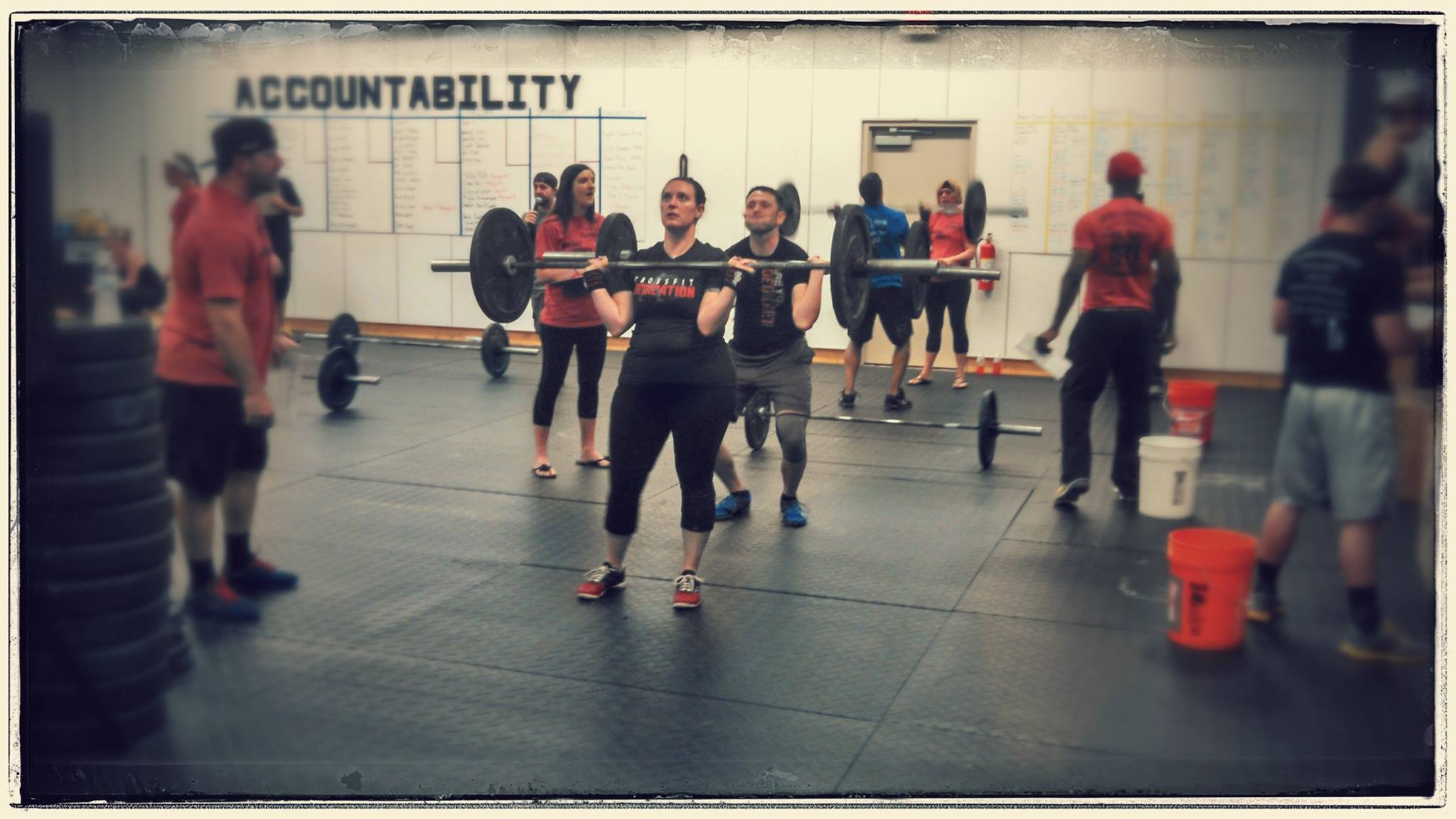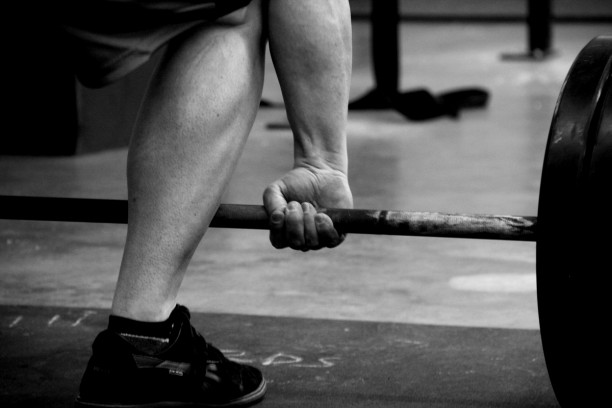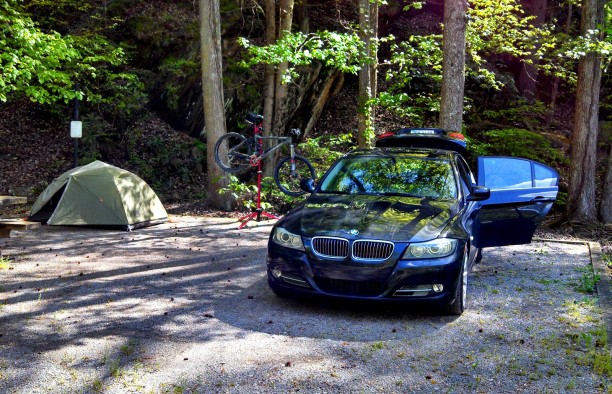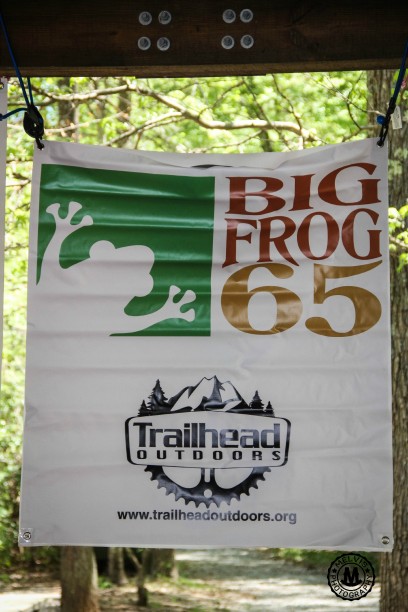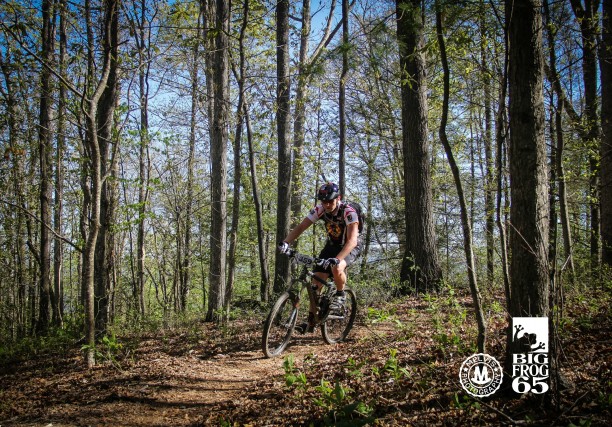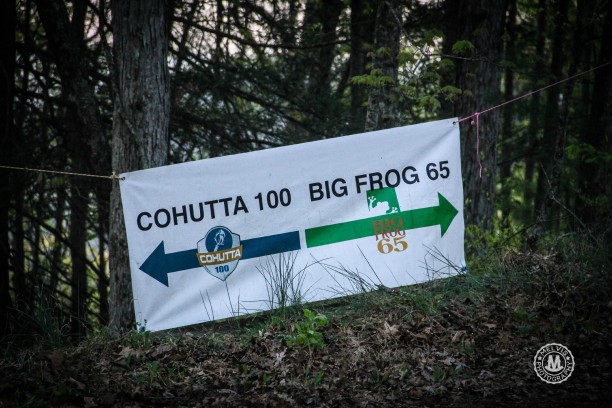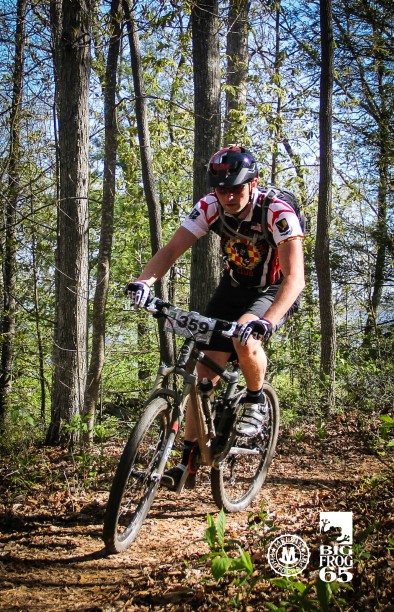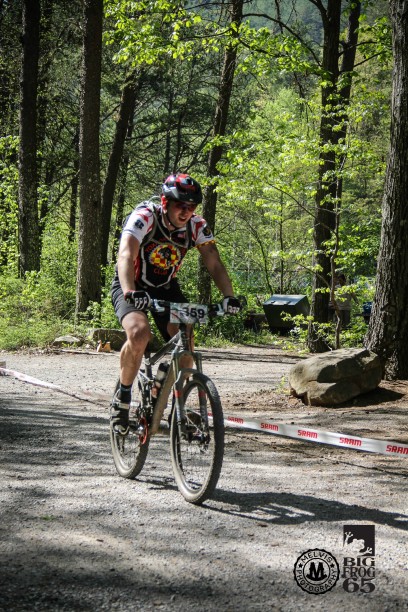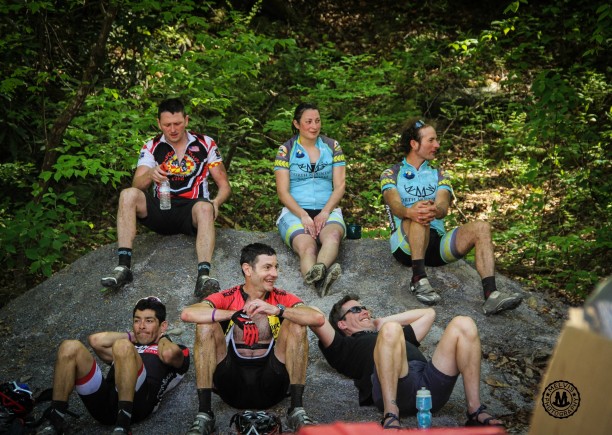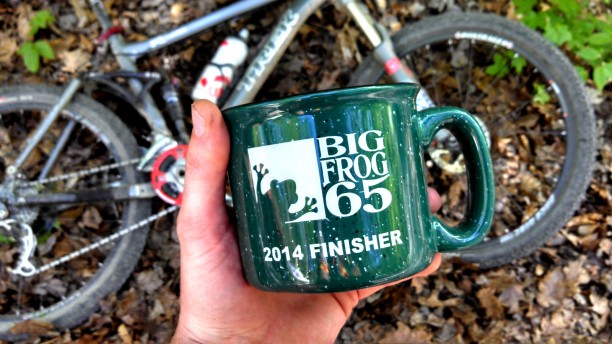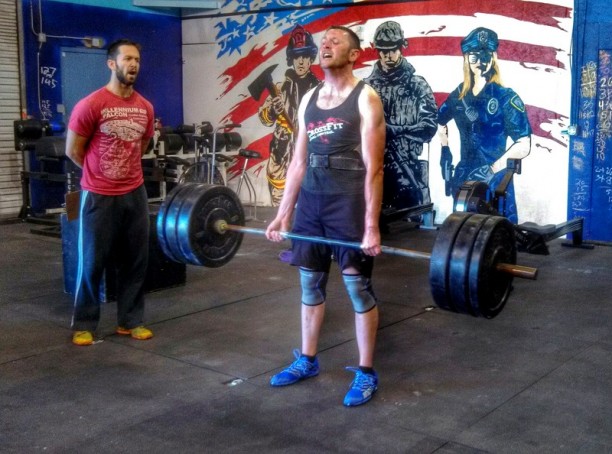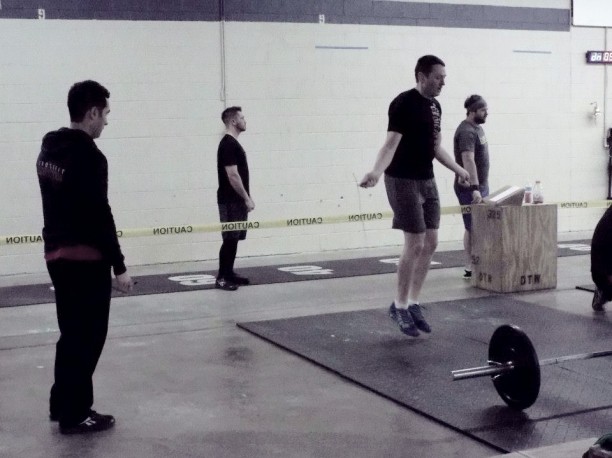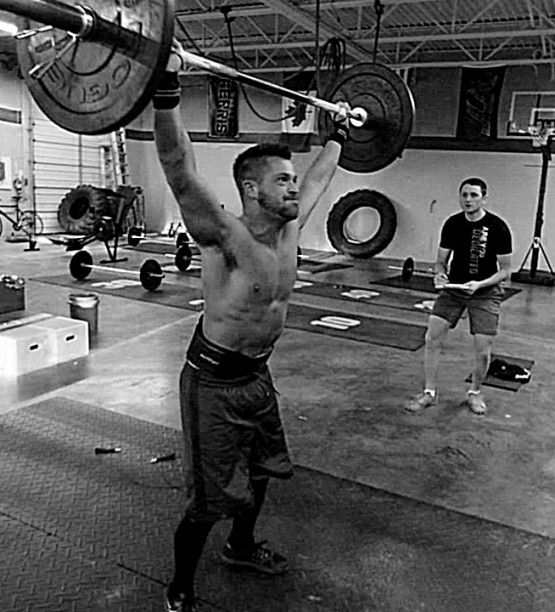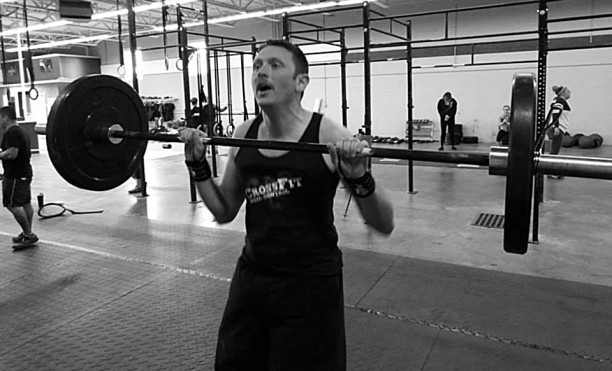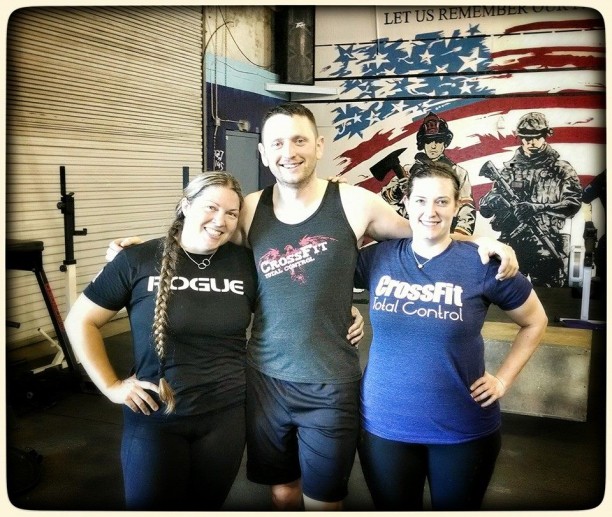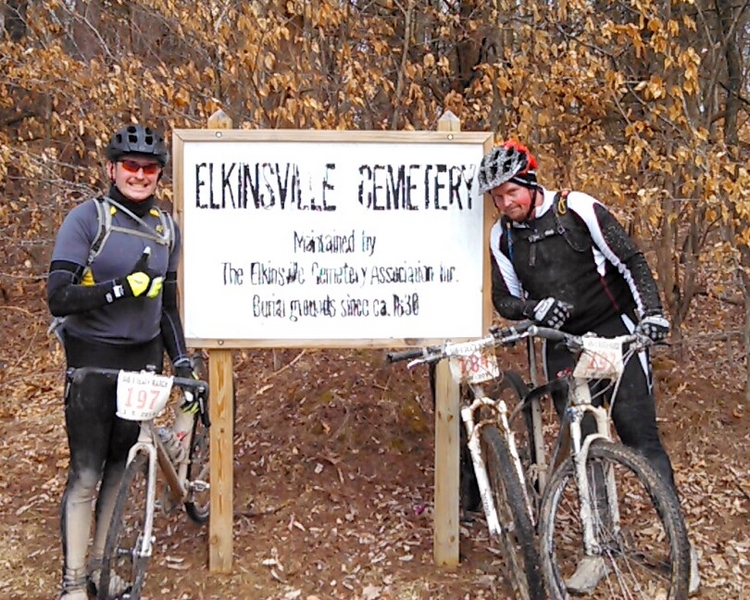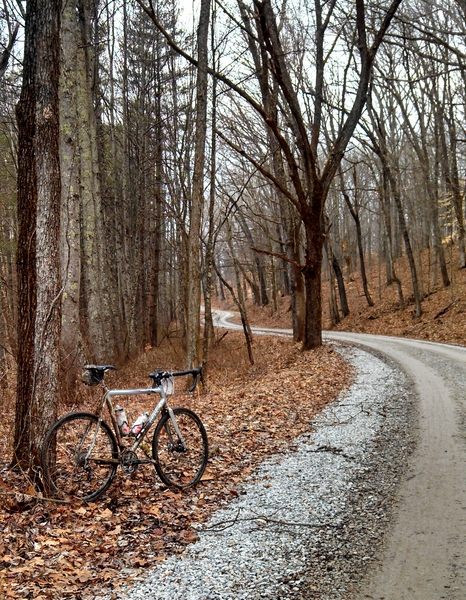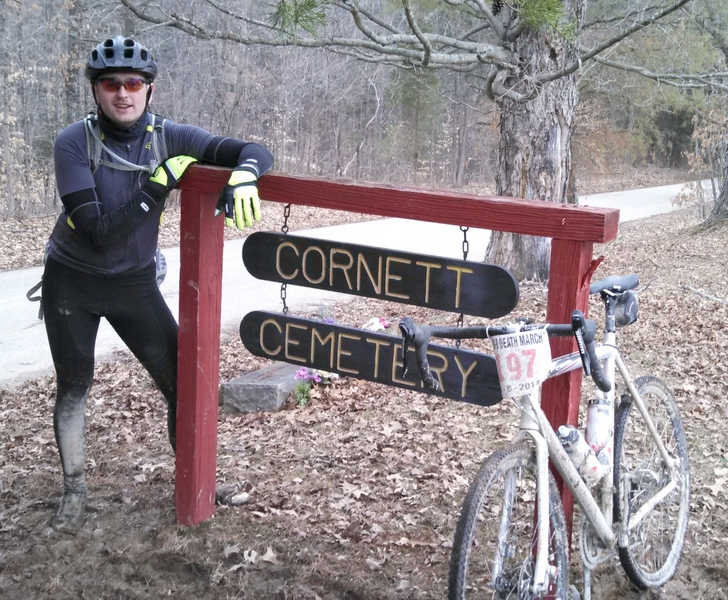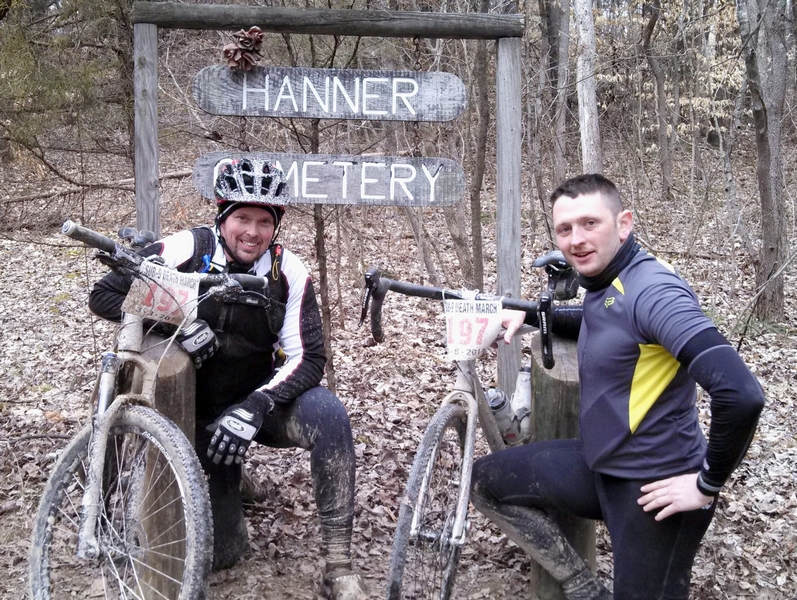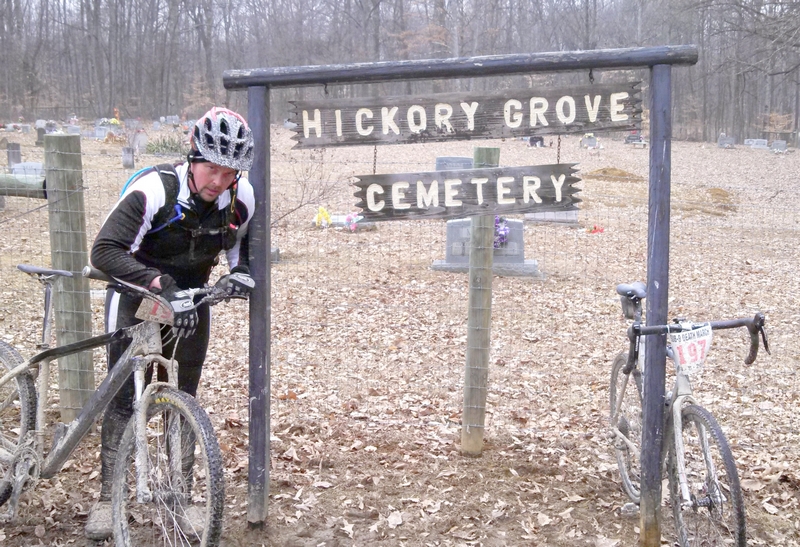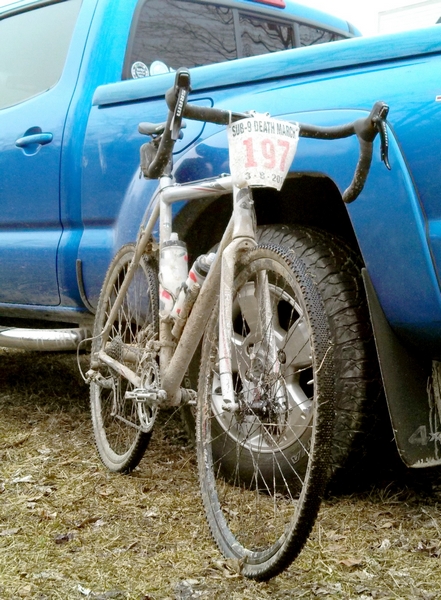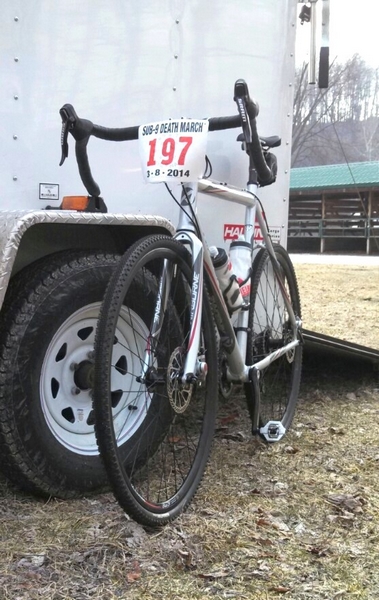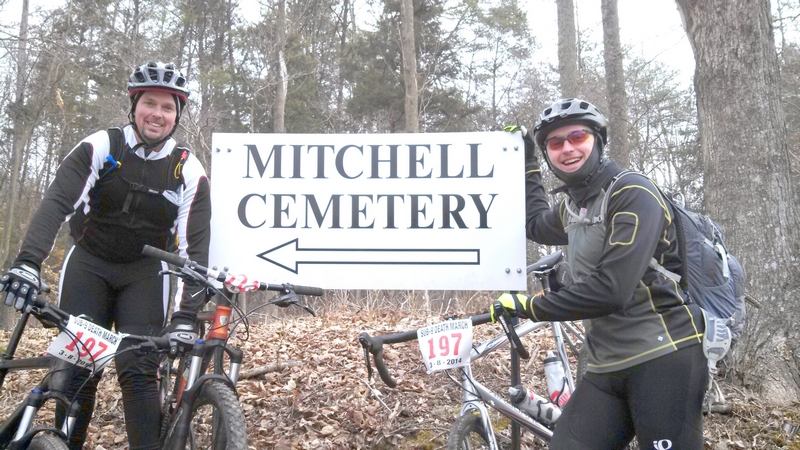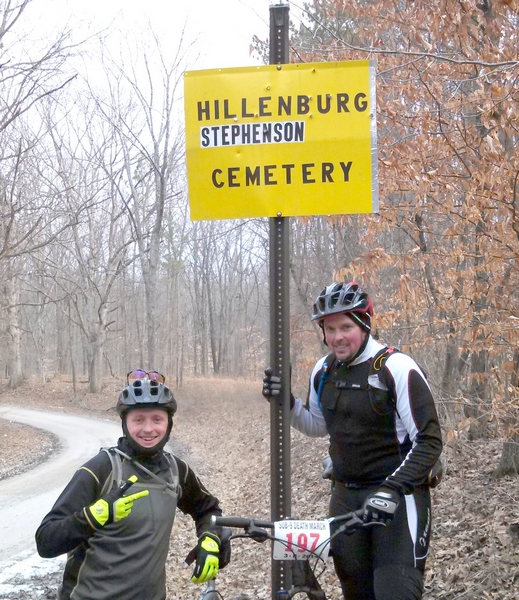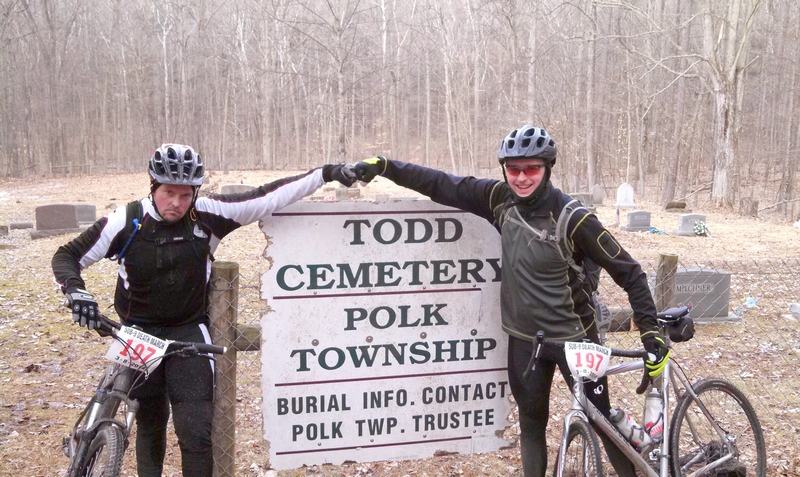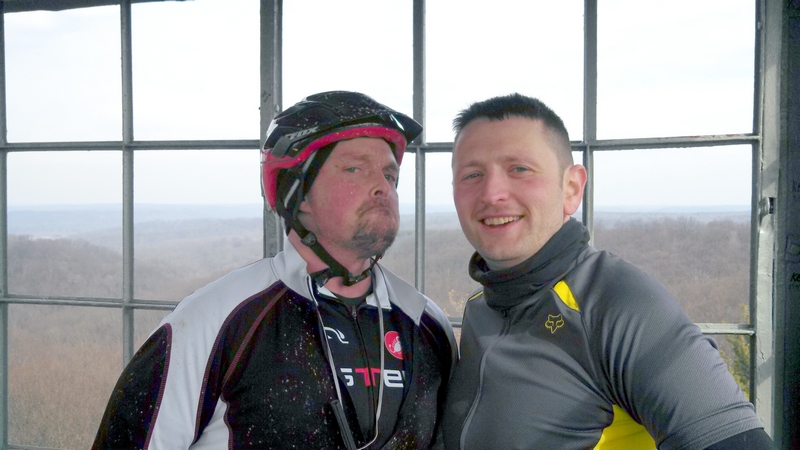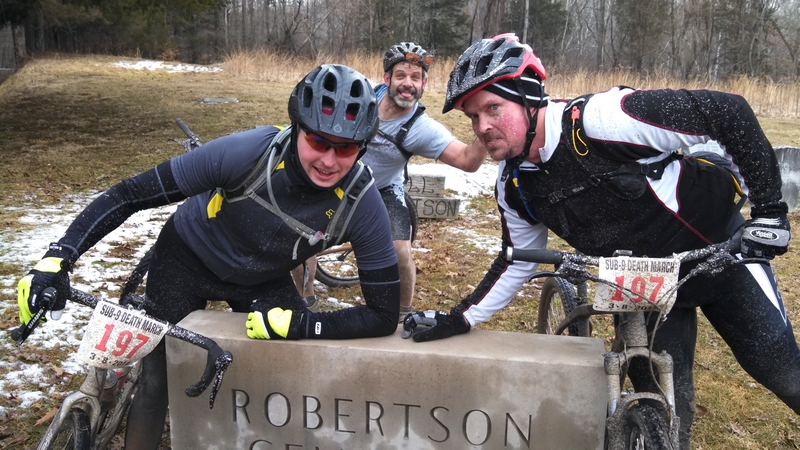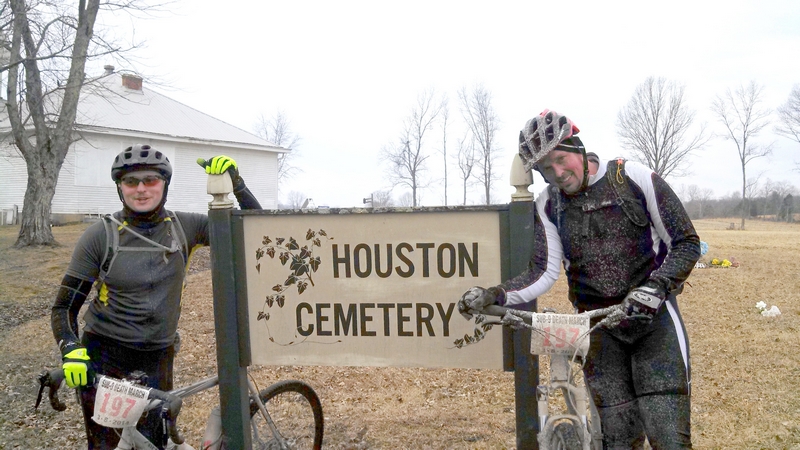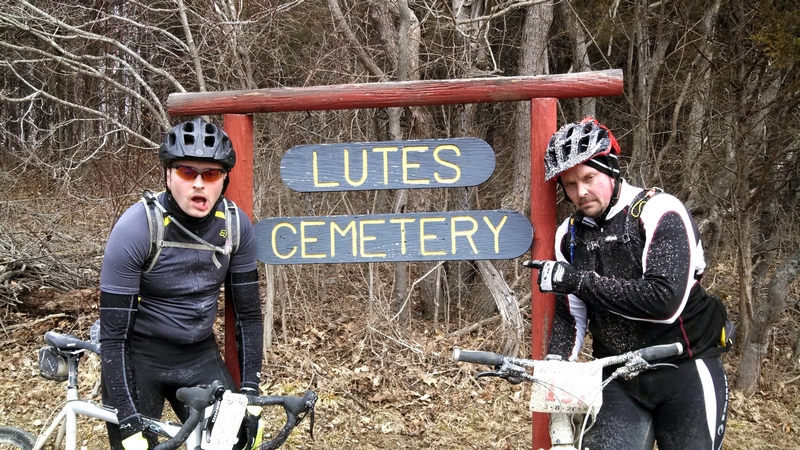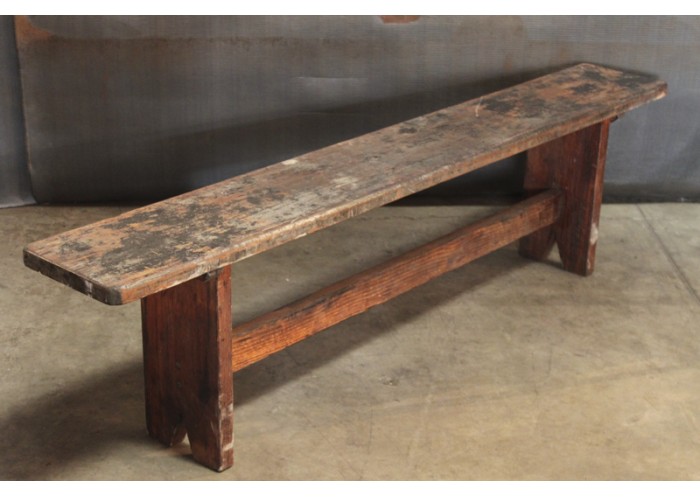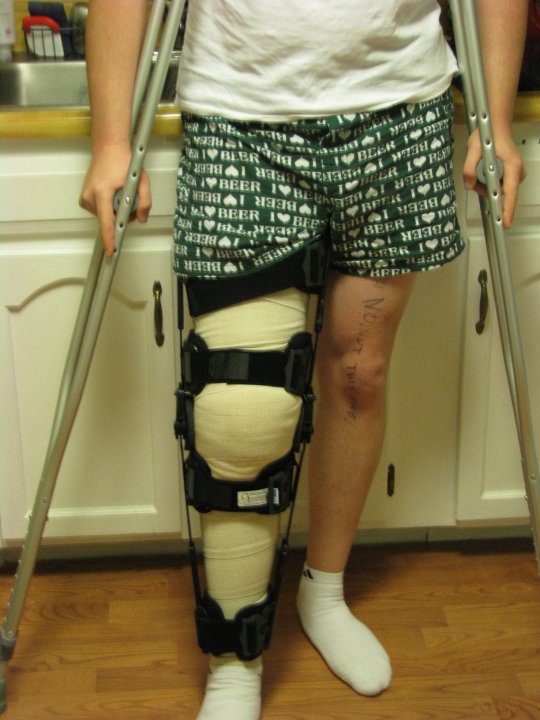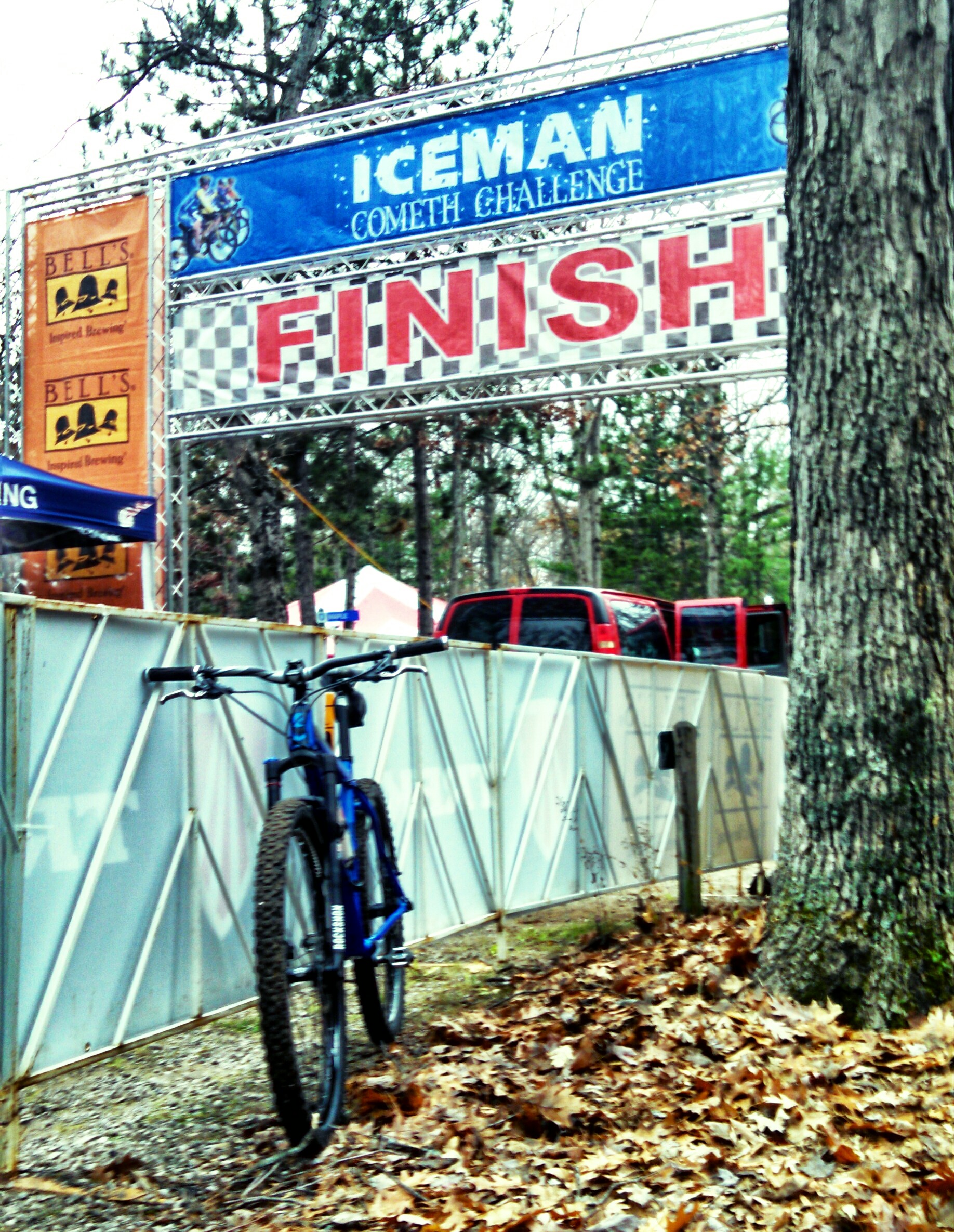
Posing after the pre-ride with Ben. I had no idea what it would take to reach that sign the next day.
When the Apostle Paul wrote to the church in Rome that “suffering produces perseverance, and perseverance character,” he didn’t have mountain bikers in mind, but the description is appropriate nonetheless. Over the past couple years, I’ve witnessed and been a part of some of the most miserable suffering you can voluntarily inflict on yourself on two wheels, and also have found myself among some of the greater characters (in all senses of the word) I’ve ever met. Riding in the endless slog of the Death March, the unceasing climbs of Big Frog, the merciless winds at Calvin’s Challenge and the mosquito-infested forests of Lumberjack has made misery a familiar acquaintance. So familiar, in fact, that I expect it without dread. I’ve been near enough to my personal breaking point enough times now that I have learned how to keep myself there and endure, and still succeed.
Perhaps naively, I didn’t expect The Iceman Cometh Challenge to elbow its way right to the top of that list. On paper, it lacked the components that have brought me to my knees before. Neither the distance, nor the elevation, nor the technical nature of the terrain were of significant concern to me. The only wildcard was the weather, and even then, I wasn’t overly concerned. Michigan trails are famous for their ability to handle precipitation, and I have a decent enough assortment of cold weather riding gear to negate potentially frigid conditions.
But in its 25th year, The Iceman had something special up his sleeve.
In a break with longstanding tradition, I arrived in Traverse City on time, with everything I needed, and well fed and rested, the day before the race. I met up with my (fire-breathing) brother-in-law Ben, an Iceman veteran and podium finisher, to pre-ride the last portion of the course before heading to the Expo. On our chilly pre-ride, I didn’t see anything surprising. The trails were sandy but firm, with good grip and easy lines. The climbs looked punchy but approachable, and the bike was working perfectly.
I again had the good fortune to race on the Airborne Bicycles Goblin Evo, the same machine I tested and raced earlier this year. The boys at Airborne and I agreed that it should be the perfect bike for this kind of race, but we didn’t know just how right we would end up being. The Evo isn’t billed as a race machine. The long-travel fork and 2.4 inch Maxxis Ardent tires place the bike closer to the Trail category, but my experience riding the thing has convinced me of its potential as a race rig. The most important thing a race bike must have is proper geometry, because almost everything else can be adjusted or changed. And the geometry on the Evo is spot on for an XC race bike: short chainstays for good climbing and lively handling, head angle relaxed enough to be stable on descents and through corners, and rock solid stiffness.
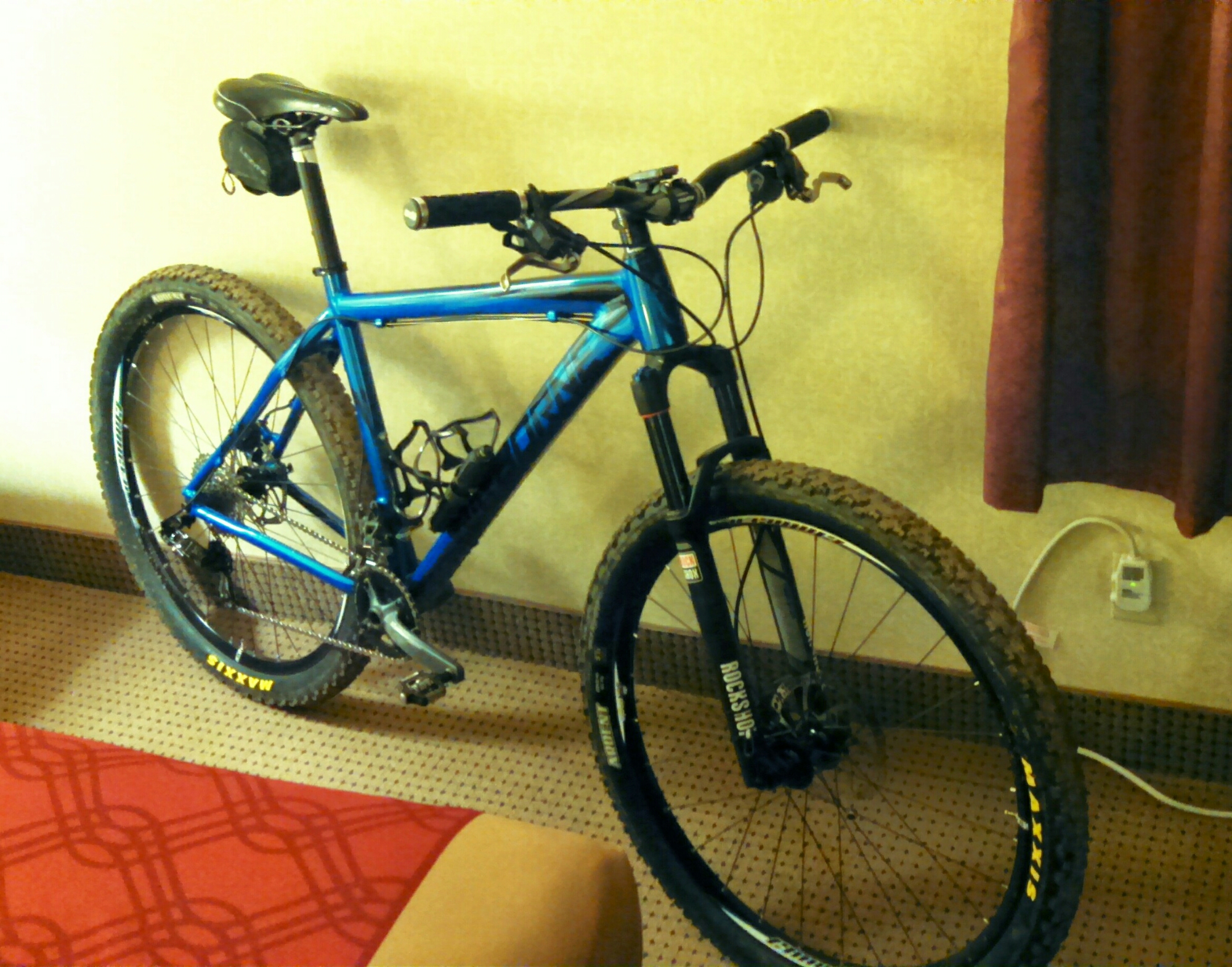
What, you mean you don’t sleep with your bike next to you? You leave it on the car? But it’ll get lonely!
A more experienced rider may have taken the weather forecast as a warning, but I was nonplussed. I’ve been in crappy conditions before. I had the right bike and the right gear, and that’s all I could worry about. When big, heavy snowflakes appeared outside my hotel window as I got ready for bed on Friday night, I only grinned and thought yup, this is gonna suck. Then I shrugged and went to bed.
Race morning was far too busy with administrative details for me to contemplate what I was about to endure. It probably took me 20 minutes just to apply all the appropriate layers of clothing necessary to keep me warm(ish) and dry (yeah right) during the race. The Iceman Cometh Challenge is a point-to-point race from Kalkaska to Traverse City, which means leaving your car in one location, having a bag of clothes at the other, and arranging transportation (via the provided shuttle service) for you, the bike, and your bag. I parked in Kalkaska (which I won’t next year), threw some lube on the chain, and wandered over to the start line, to cheer on Ben as he stormed the course with the first wave.
My wave (18) didn’t start for another 50 minutes, so I had plenty of time to get back to my car, put on the last few bits of cold weather gear I would need, throw my bag on a Penske truck bound for Traverse City, and wander back to the start line. It had snowed and rained all night and all morning, and was still only 36°F and raining when I squeezed in under the staging tent, but my optimism and excitement for the event remained undamped.
I was so optimistic, in fact, that I slotted into the second row of my wave, the better to get a clear start. I had this vision in my head of hitting the dirt and picking off the riders ahead of me, then having clear trail to chase down the previous waves.
HA!
When the start was sounded for our wave, I took off with the lead group, spinning up to a respectable pace and staying with the leaders. But when they continued to accelerate through 18 mph, I let them go. Iceman is many things, but it’s not a sprint race, at least at my level. I backed off as my legs started to complain about the sudden punishment, and reasoned that I’d see many of them again after we left the pavement.
Only when we left the pavement, things got ugly, and fast. The first gravel road was completely saturated with water, and the spray and silt made it hard to see, let alone pass anybody. By the time we hit the opening section of two-track, my brakes were already grinding, which they would continue to do for most of the rest of the race. I started to pick riders off by ones and twos, but it was impossible to get into any kind of rhythm. So I settled in, reminded myself that there was a lot of race left, and took my passes where I could.
I was surprised that most of my passing opportunities were coming on the more difficult sections. Contrary to previous experience, I was passing people on the climbs, in technical sections, and when the sand and mud got rutted and deep. Some of that was down to my equipment; it was far easier for me to find traction off the racing line than for some of my competitors, shod as they were with small-tread racing tires. But the rest of it was down to my fitness and bike handling, and my exuberance at being part of the largest mountain bike race in the United States.
I was still getting held up a lot, and the gaps I thought would develop never materialized. The tops and bottoms of every climb were soon marked by clumps of dismounted riders, hunched over their machines as they attempted to address some mechanical malfunction. I continued to pass where I could, but some stretches of singletrack allowed few opportunities. The tread in many areas had been pulverized into a tarry consistency that felt like riding through peanut butter.
Somewhere around mile 10, we hit the logging road that would become symbolic of the whole race. To call it a road is a generous overstatement. By the time I reached it, and 1700 or so other riders had squished, slogged and slid their way through it, the road had been reduced to a longish stretch of deep mud and standing water. I was determined to stay on my bike, even as others unclipped and dragged theirs into the woods to walk the whole section. I shifted to the easiest gear and ground along, yelling ahead of me for dismounted riders to get clear, so they wouldn’t break my momentum. I picked my lines as best I could, using the experience of Coombs Road at the Death March as a guide, and kept my legs moving. After a final splash through a 10-foot-long puddle, I was out of the mud and bearing right back onto a proper trail! I must’ve passed a hundred riders on that stretch alone.
But it wasn’t long after this that I started suffering the consequences of making so many of my passes in the most difficult sections. The course became punctuated by short, steep climbs, a few of which forced me off the bike as I asked my legs for power they didn’t have, and my rear tire slipped as I tried to stand for more torque. I had been so busy during the first hour or so that I was far behind schedule with my nutrition, and my energy was flagging.
This was when the suffering started, for me. I pulled the throttle back a little and tried to get some more consistent swigs from my bottle, even though the nozzle was filled with mud and debris. I was getting passed with depressing frequency now, and my rear derailleur had begun having trouble shifting down the cassette. I cursed myself for not finding more time to train in the previous month, for not getting out on more simulation rides, and for not losing those five pounds I’ve wanted to lose all year. For the first time in the race, my hands started to get cold, and I noticed just how wet and dirty I was.
Mentally, I was no longer in a race, but in a grinding trudge to the finish; the survival mode I’ve employed on so many other occasions. Ordinarily, for a first attempt at an event, this wouldn’t have been a big deal. But I had anticipated being able to legitimately race this one, given my season’s experience and fitness level. A combination of the atrocious conditions and a few strategic errors had put me firmly back in my place, and now all I could do was keep my legs moving, and hope they came back at some point.
One unique element of Iceman Cometh is the spectators. Atrocious conditions or no, they were out in force at all accessible points on the course, and some points that required quite a hike to reach. They were at every intersection, at the top of every hill, and along every road crossing, ringing cowbells and cheering their frozen faces off. The spectators alone are worth the price of admission to Iceman, even if that price includes, as it did for most riders this year, a slew of worn out or broken bike components.
It was after one particularly vociferous stretch of spectators, stationed at the midway point of Broomhead Road, that I decided it was time to try and get myself together. The gravel road past the spectators was flat, but despite their cheers, I couldn’t manage to pick up any speed. I looked down and saw that I was barely doing 10 mph, where I should have been doing 15. That just wouldn’t do. As the course returned to singletrack trail again, I pulled off to the side, to stretch my legs and take in more nutrition. I was surprised to find my first bottle still about half full, and I hadn’t even touched my second bottle yet. No wonder I was running out of gas! I forced myself to stand there and finish my first bottle, even as dozens of riders came past me. I’m sure that some of them were riders I had triumphantly passed just five miles ago, when my legs still felt good, and I was powering through the mud of the logging road. But no matter, this was what I had to do to recover.
It took another few miles, but I did recover a little. I didn’t get all of my power back, but I was at least able to accelerate again, and grind up some hills. I started passing people here and there, and that felt good enough to convince me I was back in the race, even if I was a half hour behind where I’d hoped to be. I was having fun again, if one can call being soaking wet in mid-30s temperatures, covered in mud and sand, and riding a bike that’s barely working, fun.
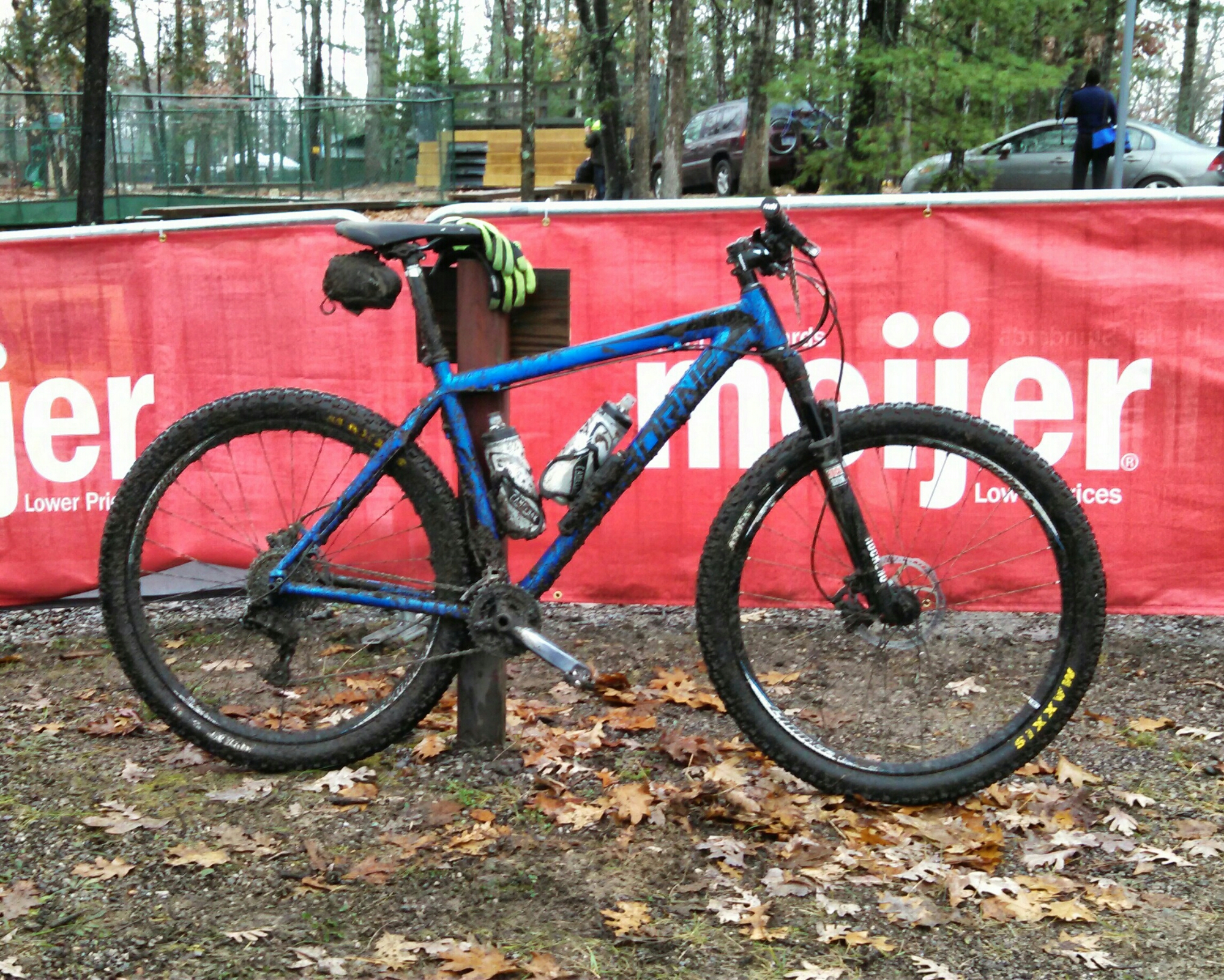
It didn’t like it, but it got me there. The Airborne Bicycles Goblin Evo held its own in the worst conditions Iceman has ever thrown at his riders.
I had started the race with a 2×10 drivetrain, but as the mud and sand packed its way into every nook and crevice of rider and machine alike, my selection of gears became somewhat fewer. By the midway point it was reduced to a 2×7, although with my lack of pace, losing the top three gears wasn’t a huge penalty. Then I had only a 2×5, and then a 2×2-and-sometimes-five-if-I-hit-a-bump-just-right. Front derailleurs may not be in vogue in the mountain bike community, but having one saved my bacon in this race, as it doubled my swiftly dwindling list of options.
We were finally reaching parts of the course I recognized from my map study, including Anita’s hill, and 11% grade punch in the face around mile 25. I trudged up that hill on foot, pushing my bike with legs on the verge of spasm, while I cheered for the handful of spunky riders who managed to climb the whole thing in the saddle. There were spectators at the top of this hill too, perhaps warmed by a bottle or three, cheering wildly for those bold enough to climb. At the top, many riders paused to catch their breath, even if they walked it, but I threw a leg over and started down the descent, knowing I was close enough now to start taking chances against my fatigue.
At last we crossed a road I recognized from our pre-ride, and I called up whatever reserves I had left. I knew there were two little hills left, and that I could climb both of them. I started passing people again, trading places with a girl in a white and yellow jersey as we weaved and dodged around riders who were only a bit more spent than we were. The final 3 miles were a microcosm of the race in full, with rutted sand, deep mud, and slick, tight singletrack, interspersed with the occasional punchy climb. But now I knew where I was, and what to expect, and I put forth everything I had.
The finish area at Iceman Cometh is something truly special. You can hear the music and the party from a long way off, and it has a way of motivating you to push harder than you thought you could. The course brings you just close enough to see the finish, to smell the food trucks and make out what the announcers are saying, before heading you off back into the woods for another half mile. For many of the riders around me, this was the last straw, and they were demoralized. But thanks to my pre-ride, I knew it was coming, and was able to keep the hammer down! I was passing people in clumps now, carving up the inside of them at every available opportunity. I passed six of them in one corner, as they all swung wide, searching for traction. I put every ounce of energy I had left into my screaming legs, fighting to keep the pedals turning and my momentum up, until at last I dove under the bridge, swerved to the left, and crossed the finish line!
The area just past the finish line was awash in shattered riders, broken bikes, photographers, fans and family members. I pedaled on slowly until I was through the throng, finally unclipping gingerly and sitting on my top tube to let my legs come back from the brink of catastrophic spasm. After a few failed attempts to rally up with my brother in law (who was very happy to hear I was alive), I decided the best thing to do was get showered and changed, and warm up. The steam and hot water of the on-site shower trailers were a godsend, even if the wait to use one was a half hour long.
In the final tally, I finished 51st in my age group, and 2078th overall. I had a target of cracking the top 50 in my age group, so I’m relatively satisfied with that result. I learned a lot this year, and hopefully will have solutions to some of my mistakes for next year. In truth, I have to be satisfied with finishing at all. Of the over 5200 entrants, only 3500 or so managed to complete the race. Everyone I spoke to who had raced Iceman previously, even those with decades of experience, said these were the worst conditions they had ever seen. So despite not riding as strong as I had envisioned, I rode as well as I could have hoped. And I’ll be back.

